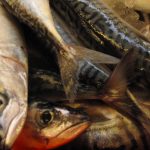The report, “Out of Balance: Industrial Fishing and the Threat to Our Ocean,” revealed that the industrial herring trawlers has threatened the coastal waters of New England. It shows the mismanagement of the commercial Atlantic herring industry. The report details the pivotal role Atlantic herring play in the region’s ecosystem and economy, and charts the growth of the industrial-scale herring fleet that jeopardizes the health of this key resource.
It is fact that Atlantic herring form the cornerstone of New England’s marine ecosystem with whales, seabirds, striped bass and tuna depending on these fish for survival. Herring also contribute a great deal to the development of the region’s commercial fishing industry, providing forage for cod, haddock and other groundfish, bait for lobstermen and sardines for human consumption.
It is true that the herring resource supports commercial and recreational fisheries with a value of more than a billion dollars as well as an ecotourism sector. But these fishes are threatened by intense commercial fishing. Since 1990s the industrial-scale mid-water trawlers, ships towing fine-mesh nets as wide as a football field and five stories tall, have relentlessly fished the region’s waters. Today these industrial ship catch more than 150 million pounds of herring each year in New England.
Peter Baker, director of the Herring Alliance, said that the report documents just how far the regulation of the herring fleet is lagging behind the rapid changes this fishery has undergone.








